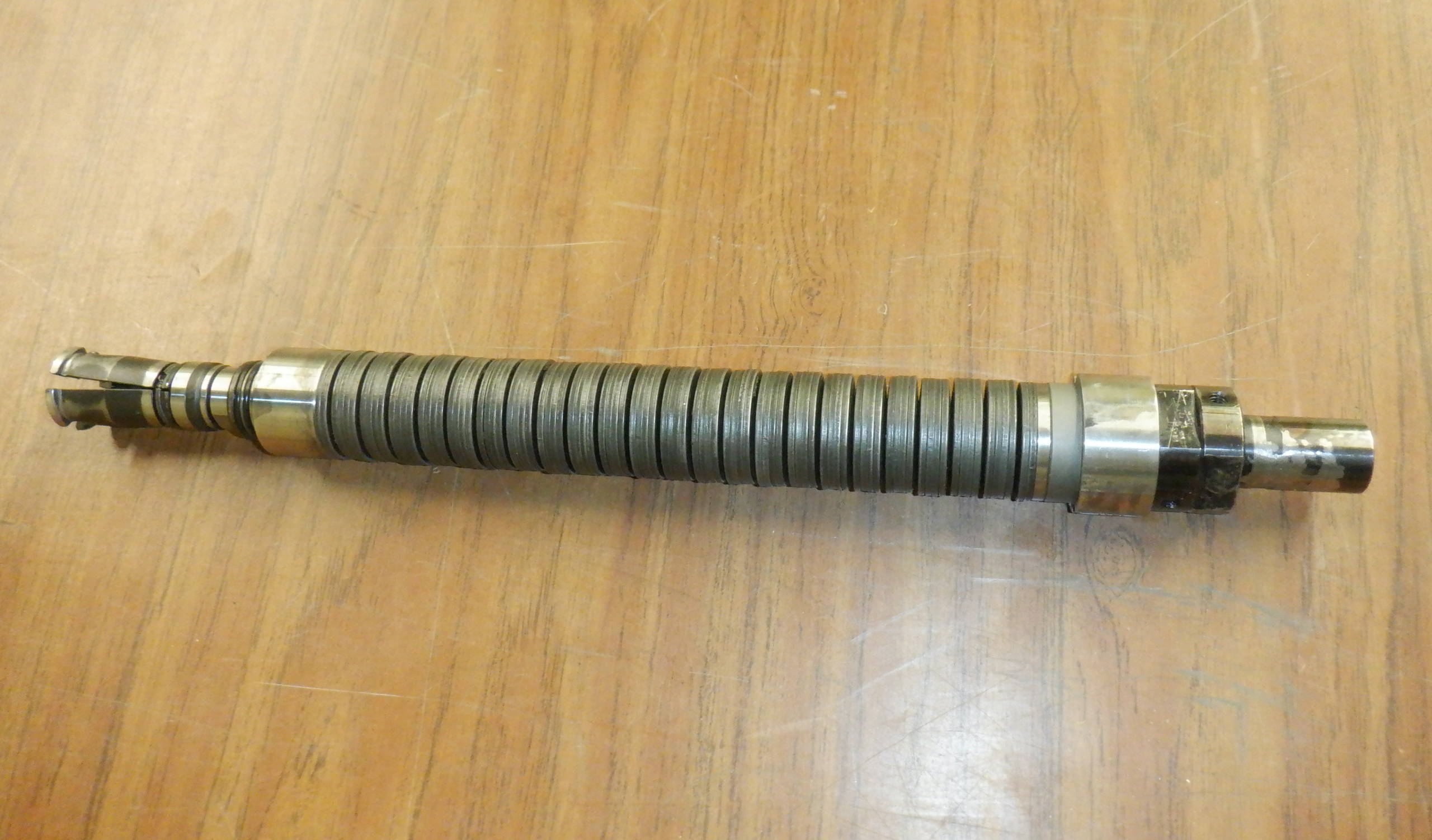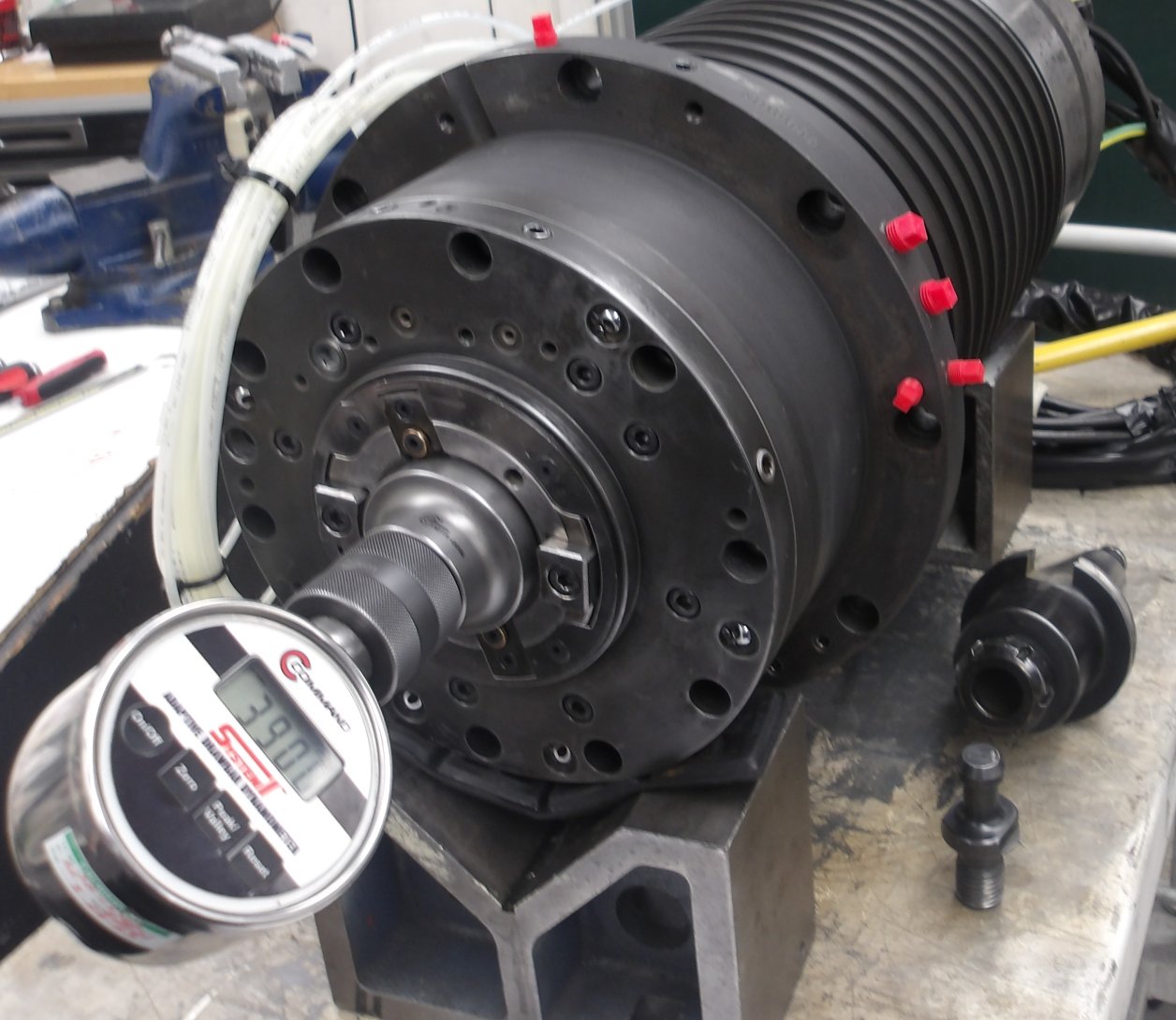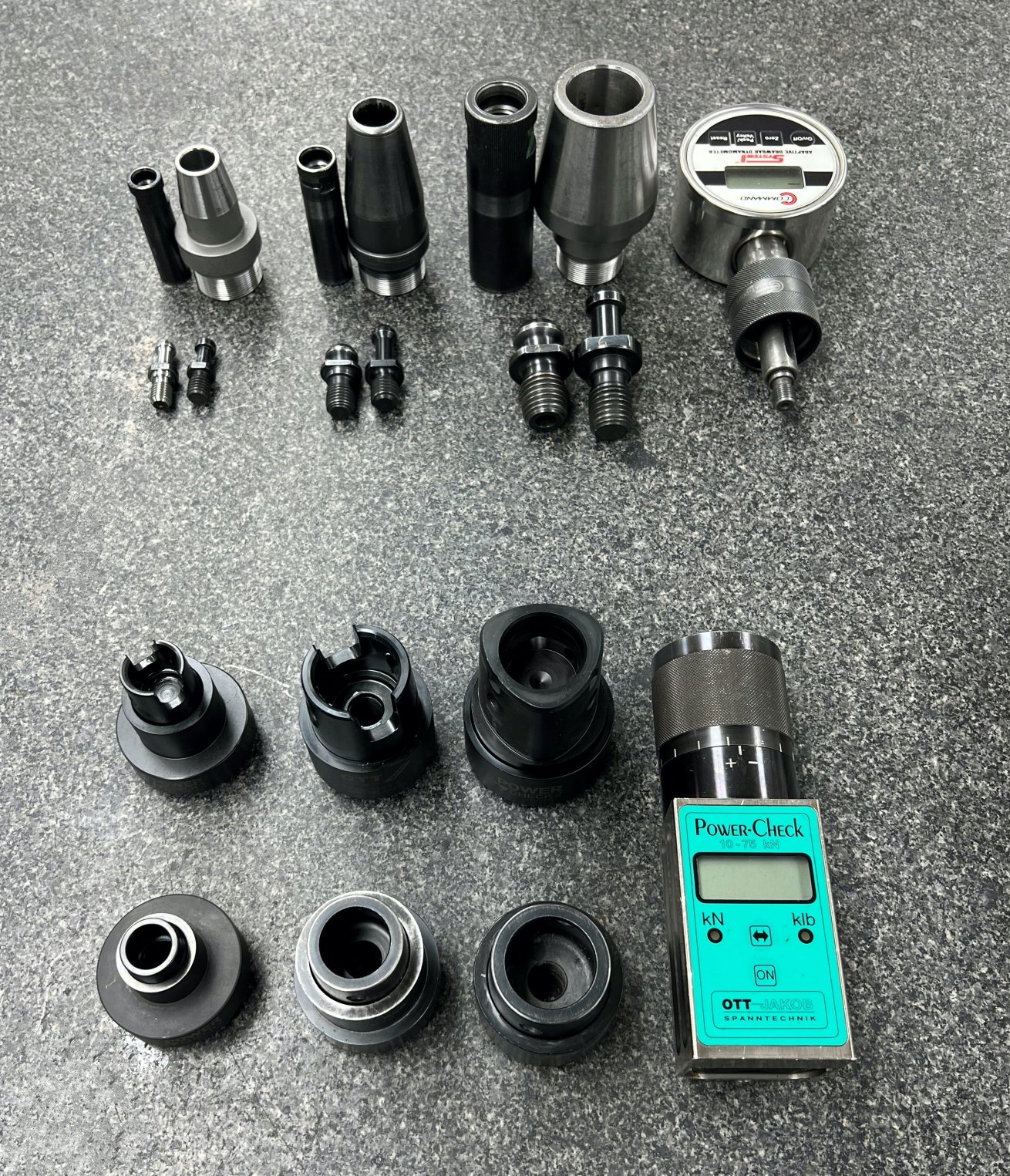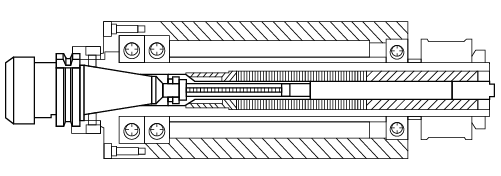Spindle Drawbar Repair
Understanding Drawbar Assembly & Force
At Northland Tool & Electronics, we frequently encounter spindles with drawbar issues that can negatively impact performance. Over time, problems with the toolholding system can damage the spindle shaft, which in turn can cause poor surface finish on parts and even a spindle crash. If a damaged or loose drawbar system goes unaddressed for too long, it could necessitate a full spindle rebuild.

Whether it’s in need of repair or not, we address the drawbar as part of every spindle repair we perform.
We ask that customers include all rotating parts when sending in their spindle, including the drawbar system. We like to balance the entire rotating assembly to ensure we achieve the best possible spindle lifespan. Once we verify that the drawbar system is functioning properly and has the correct tool holding force, we know your spindle will perform at its best.
What Is a Spindle Drawbar Assembly?
The drawbar is arguably the most important part of the entire machine, since it supplies the force to hold the tool and toolholder assembly in place. Without the proper drawbar functionality, even the most precise machines will be plagued with subpar part quality, excessive tool and shaft wear, and ultimately safety concerns.
It is critical that the drawbar supplies enough force to hold the toolholder in the spindle, especially with large cutting loads. Likewise, the drawbar must maintain its hold in the event of a loss of power.
The Importance of Drawbar Maintenance
Regular drawbar inspection and maintenance can sustain your spindle’s accuracy, ensure it runs at maximum performance, and help extend its lifespan. Most importantly, it can help you avoid large repair bills and downtime. Low drawbar pressure or damage to the toolholding system can lead to a range of costly issues, including:
- Excess noise
- Tool breakage
- Accelerated wear of the gripper fingers
- Spindle crash
- Machine downtime and productivity loss
- Poor surface finish
- Low tool life
- Problems with repeatability
- Spindle runout and inaccuracy
- Excess vibration

Regular inspection of the spindle drawbar retention force and the toolholding system is highly recommended per every 150 hours of service. Spindle drawbar force can be measured with a dynamometer; ideal force varies by manufacturer, so be sure to consult the OEM, and document the results to trend. When measuring drawbar retention force, be sure to thoroughly inspect the following:
- The gripper assembly on the end of the drawbar
- The spindle shaft taper
- Shaft face (if using dual contact tooling)
The most common way to provide clamping force to the drawbar is with a stack of Belleville washers — typically around 150 or more. Often, if technicians detect reduced clamping force, it is necessary to replace worn washers to prevent spindle damage.
Spindle Drawbar Rebuilding Service
Northland Tool & Electronics has the expertise and experience you need to keep your spindle operating at peak performance.

If you notice any of the issues listed above, it’s time to send your spindle and drawbar assembly in for repairs.
If you have the tools and capabilities to check your drawbar force every 150 machine hours, we recommend sending the assembly in when the holding force drops below 80% of the manufacturer’s recommendation.
If regularly inspected and maintained, the time between drawbar repairs can be anywhere from 2–20 years. Of course, this is dependent on the machine’s application — whether it’s cutting granite, plastic, or using water as coolant, myriad factors will contribute to a spindle’s expected lifespan.

